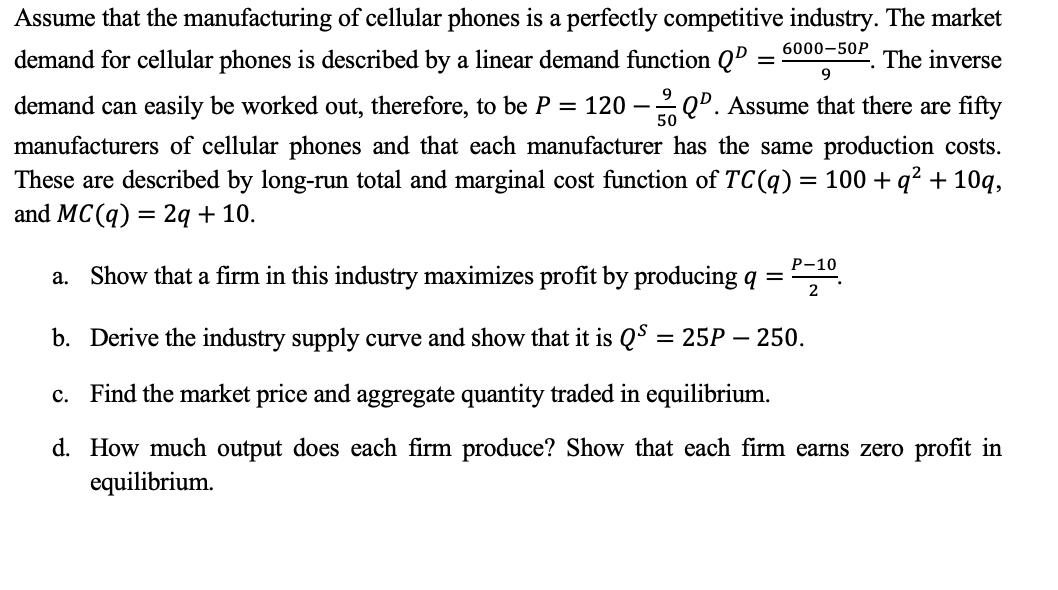Answered step by step
Verified Expert Solution
Question
1 Approved Answer
1. Return to the cellular phone industry when it was organized as a perfectly competitive industry. We will use the information in Practice Problem 2.1
1. Return to the cellular phone industry when it was organized as a perfectly competitive industry. We will use the information in Practice Problem 2.1 to work out consumer surplus and producer surplus in a competitive equilibrium
- Show that when QC=500 units and PC=$30 per unit then consumer surplus is equal to $22,500 and producer surplus is equal to $5,000. This results in a total surplus equal to $27,500.
- Show that when an output of 275 units is produced in this industry the sum of consumer and producer surplus falls to $21,931.25.
For reference, problem 2.1 will be mentioned below.

Assume that the manufacturing of cellular phones is a perfectly competitive industry. The market The inverse 6000-50P 9 demand for cellular phones is described by a linear demand function QD demand can easily be worked out, therefore, to be P = 120-Q. Assume that there are fifty manufacturers of cellular phones and that each manufacturer has the same production costs. These are described by long-run total and marginal cost function of TC(q) = 100+q + 10q, and MC(q) = 2q + 10. P-10 2 a. Show that a firm in this industry maximizes profit by producing q - b. Derive the industry supply curve and show that it is QS = 25P-1 - 250. c. Find the market price and aggregate quantity traded in equilibrium. d. How much output does each firm produce? Show that each firm earns zero profit in equilibrium.
Step by Step Solution
There are 3 Steps involved in it
Step: 1
120 30 10 D C 275 500 Consumer Surplus T B Producer Surplu...
Get Instant Access to Expert-Tailored Solutions
See step-by-step solutions with expert insights and AI powered tools for academic success
Step: 2

Step: 3

Ace Your Homework with AI
Get the answers you need in no time with our AI-driven, step-by-step assistance
Get Started


